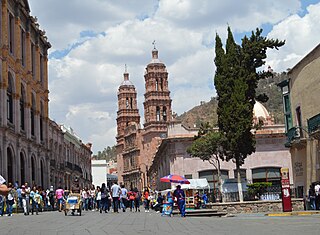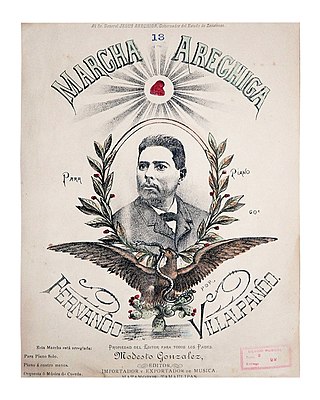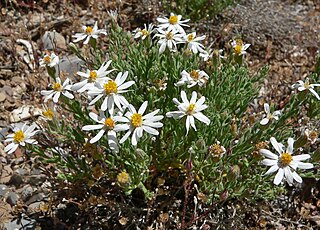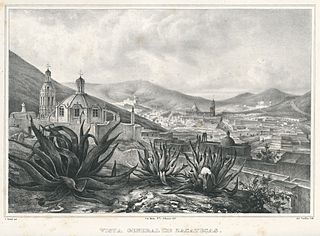See also
- College of San Fernando de Mexico
- College of Santa Cruz de Querétaro
- Spanish missions in Louisiana
- Spanish missions in Texas
The College of Guadalupe de Zacatecas was a Roman Catholic Franciscan missionary college, or seminary (Colegio Apostolico), founded in Guadalupe, Zacatecas (Mexico) by the Order of Friars Minor between 1703 and 1707. The institution was established to provide specific training for priests who were to work among the indigenous populations in the Spanish colonial Viceroyalty of New Spain, present day Mexico and the southwestern United States.
Of the thirty-eight Spanish missions in Spanish Texas, including the one in Spanish Louisiana, and the six visitas (country chapels) on the lower Rio Grande, nine missions and all six visitas were staffed by the College of Zacatecas.

The Republic of Texas was a sovereign state in North America that existed from March 2, 1836, to February 19, 1846. It shared borders with Mexico, the Republic of the Rio Grande, and the United States of America.

Zacatecas is the principal city within the municipality in Mexico of the same name, and the capital and the largest city of the state of Zacatecas. Located in north-central Mexico, the city had its start as a Spanish mining camp in the mid-16th century. Native Americans had already known about the area's rich deposits of silver and other minerals. Due to the wealth that the mines provided, Zacatecas quickly became one of the most important mining cities in New Spain. The area saw battles during the turbulent 19th century, but the next major event was the Battle of Zacatecas during the Mexican Revolution when Francisco Villa captured the town, an event still celebrated every anniversary. Today, the colonial part of the city is a World Heritage Site, due to the Baroque and other structures built during its mining days. Mining still remains an important industry. The name Zacatecas is derived from the Zacateco people and has its roots in Nahuatl. The name means "people of the grasslands".
Guadalupe or Guadeloupe may refer to:

Los Adaes was the capital of Tejas on the northeastern frontier of New Spain from 1721 to 1773. It included a Franciscan mission, San Miguel de Cuellar de los Adaes, and a presidio, Nuestra Señora del Pilar de Los Adaes. The name Adaes derives from the indigenous Adai people, members of the Caddoan confederacy of Indians who were the people the missionaries aimed to convert to Christianity. The presidio and mission were established to counter French influence in Louisiana territory and defend New Spain from possible invasion or encroachment by the French. In 1763 Louisiana came under the control of Spain and the Los Adaes outpost was no longer necessary for defense. In 1773 the Spanish closed the mission and presidio and forced the population to move to San Antonio.

San Antonio Missions National Historical Park is a National Historical Park and part of a UNESCO World Heritage Site preserving four of the five Spanish frontier missions in San Antonio, Texas, USA. These outposts were established by Catholic religious orders to spread Christianity among the local natives. These missions formed part of a colonization system that stretched across the Spanish Southwest in the 17th, 18th, and 19th centuries.

Spanish Texas was one of the interior provinces of the colonial Viceroyalty of New Spain from 1519 until 1821. Spain claimed ownership of the region in 1519. Slave raids by Spaniards into what became Texas began in the 16th century and created an atmosphere of antagonism with Native Americans (Indians) which would cause endless difficulties for the Spanish in the future. Spain did not attempt to establish a permanent presence until after France established the colony of Fort Saint Louis in 1685. In 1688, the French colony failed due to internal dissention and attacks by the Karankawa Indians. In 1690, responding to fear of French encroachment, Spanish explorer Alonso de León escorted several Catholic missionaries to east Texas, where they established the first mission in Texas. That attempt to establish a Spanish colony failed due to the hostility of the Caddo Indians.

The Spanish Missions in Texas comprise a series of religious outposts established by Spanish Catholic Dominicans, Jesuits, and Franciscans to spread the Catholic doctrine among area Native Americans, but with the added benefit of giving Spain a toehold in the frontier land. The missions introduced European livestock, fruits, vegetables, and industry into the Texas area. In addition to the presidio and pueblo (town), the misión was one of the three major agencies employed by the Spanish crown to extend its borders and consolidate its colonial territories. In all, twenty-six missions were maintained for different lengths of time within the future boundaries of the state of Texas.

The Camino Real de Tierra Adentro, also known as the Silver Route, was a Spanish 2,560-kilometre-long (1,590 mi) road between Mexico City and San Juan Pueblo, New Mexico, that was used from 1598 to 1882. It was the northernmost of the four major "royal roads" that linked Mexico City to its major tributaries during and after the Spanish colonial era.

The Spanish missions in Baja California were a large number of religious outposts established by Catholic religious orders, the Jesuits, the Franciscans and the Dominicans, between 1683 and 1834. The missionary goal was to spread the Christian doctrine among the Indigenous peoples living on the Baja California peninsula. The missions gave Spain a valuable toehold in the frontier land, and would also act as a deterrent to prevent pirates from using the peninsula of Las Californias as a jumping off point for contraband trade with mainland New Spain. Missionaries introduced European livestock, fruits, vegetables, and industry into the region. Indigenous peoples were severely impacted by the introduction of European diseases such as smallpox and measles; furthermore, the expulsion of the Jesuits from the Spanish Empire in 1767 ripped the social fabric of the peninsula, although Franciscans were sent to replace them. In 1769, the Franciscans moved to Upper California, leaving Dominicans in charge of Baja California. By 1800 indigenous numbers were a fraction of what they had been before the arrival of the Spanish, yet even today many people living in Baja California are of indigenous heritage.

Guadalupe is a town in the state of Zacatecas, Mexico. It is located in the central region of the state and is the head of the Municipality of Guadalupe. With a population of 170,029 inhabitants, it is the most populated city in the state and with the city of Zacatecas and surrounding towns it forms a metropolitan area. On August 1, 2010, the Camino Real de Tierra Adentro was inscribed by UNESCO on the World Heritage List, being the former Apostolic College of Propaganda Fide of Our Lady of Guadalupe, one of the sites on the cultural itinerary that reached this title, for its architectural richness and contribution to the evangelization of the north of New Spain. On June 30, 2015, the Legislative Branch of the State of Zacatecas approved that the city of Guadalupe Zacatecas be declared a Historical City, a title that came into effect on Thursday, September 3 of that same year after its promulgation in decree number 400 published in the Official Newspaper of the State of Zacatecas. On October 11, 2018 at the Fifth National Fair of Pueblos Mágicos held in the city of Morelia, Michoacán, Guadalupe received incorporation into the Pueblos Mágicos program, being the sixth to have this registration in the state of Zacatecas.

The "Marcha de Zacatecas" is a Mexican patriotic song that serves as the regional anthem of the Mexican state of Zacatecas.
The College of San Fernando de México was a Roman Catholic Franciscan missionary college, or seminary, founded in Spanish colonial Mexico City by the Franciscan Order of Friars Minor on October 15, 1734.
The College of Santa Cruz de Querétaro was the second Roman Catholic missionary college, or seminary, in the New World to train missionaries. One of its founders was Damián Massanet.

Chaetopappa is a genus of plants in the family Asteraceae which are known generally as leastdaisies.

Francisco García Diego y Moreno was the first bishop of the Diocese of the Californias.

Antonio Margil, OFM was a Spanish Franciscan missionary in North and Central America. Based at the College of Santa Cruz in Santiago de Querétaro, after 1715, he worked largely in Texas and Louisiana. Father Margil was declared "Venerable" in 1836.

The Presidio Nuestra Señora de Loreto de la Bahía, known more commonly as Presidio La Bahía, or simply La Bahía is a fort constructed by the Spanish Army that became the nucleus of the modern-day city of Goliad, Texas, United States. The current location dates to 1747.
Events in the year 1843 in Mexico.

Villa de Cos is one of the 58 municipalities of the Mexican state of Zacatecas. It is located in the center-east of the state, bordered by the municipalities of Mazapil, Francisco R. Murguia, Río Grande, Felipe Pescador, Fresnillo, Panuco and Guadalupe in Zacatecas as well as Santo Domingo and Villa de Ramos in the neighboring state of San Luis Potosí. It has an area of 6,405 km2 occupying 8.53% of state territory. The municipal seat is located in the town of the same name. According to figures from INEGI, in 2010 it had a population of 34.328 inhabitants. Its main economic activity is picking chile and feedlot.

The Battle of Zacatecas in 1835 took place on 11 May 1835 in the immediate vicinity of the capital city in the state of Zacatecas, Mexico, between elements of the federal army under the command of Gen. Antonio López de Santa Anna and elements of the rebel army, which was commanded by General Francisco García Salinas during the Rebellion in Zacatecas of 1835.